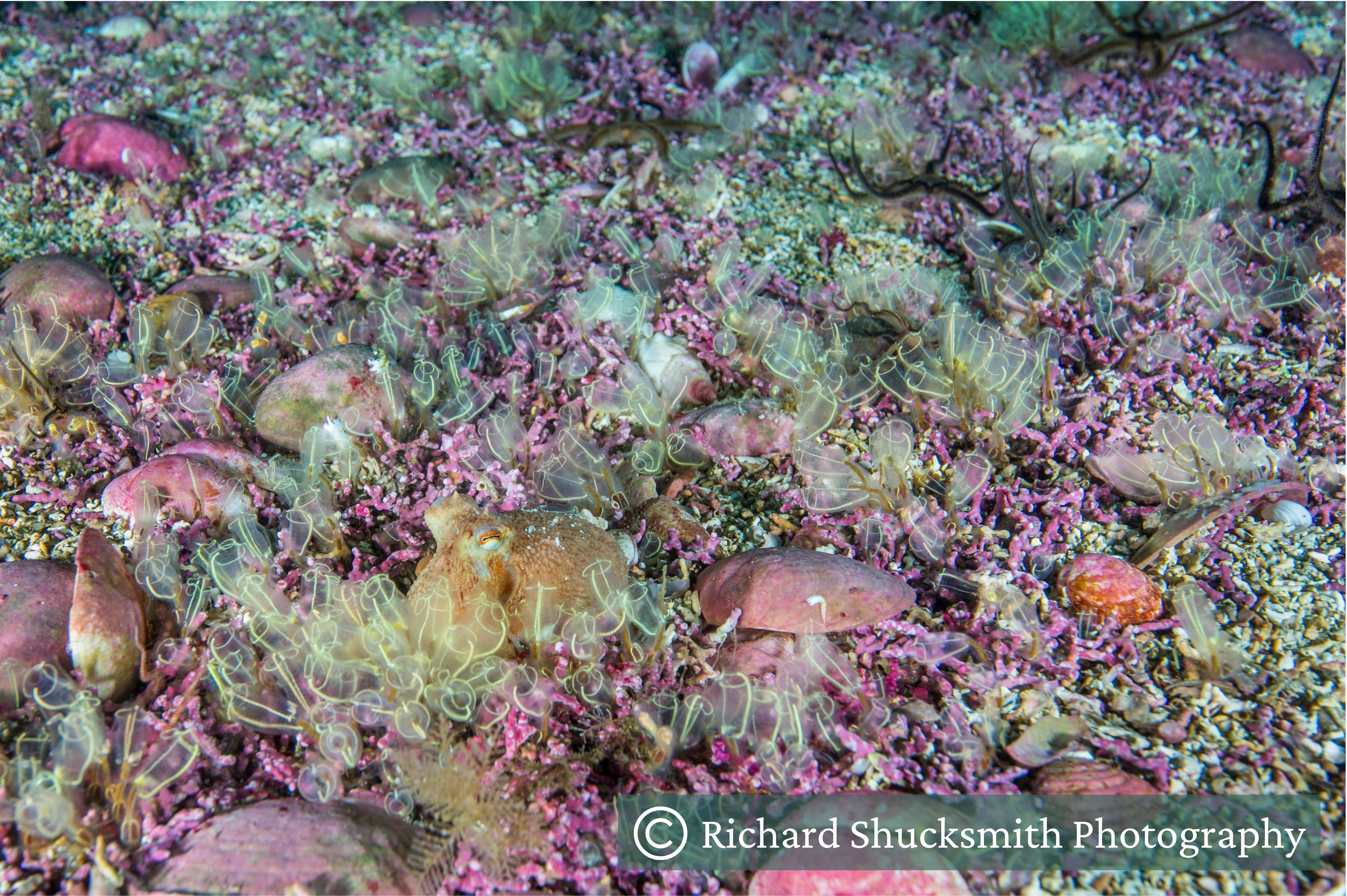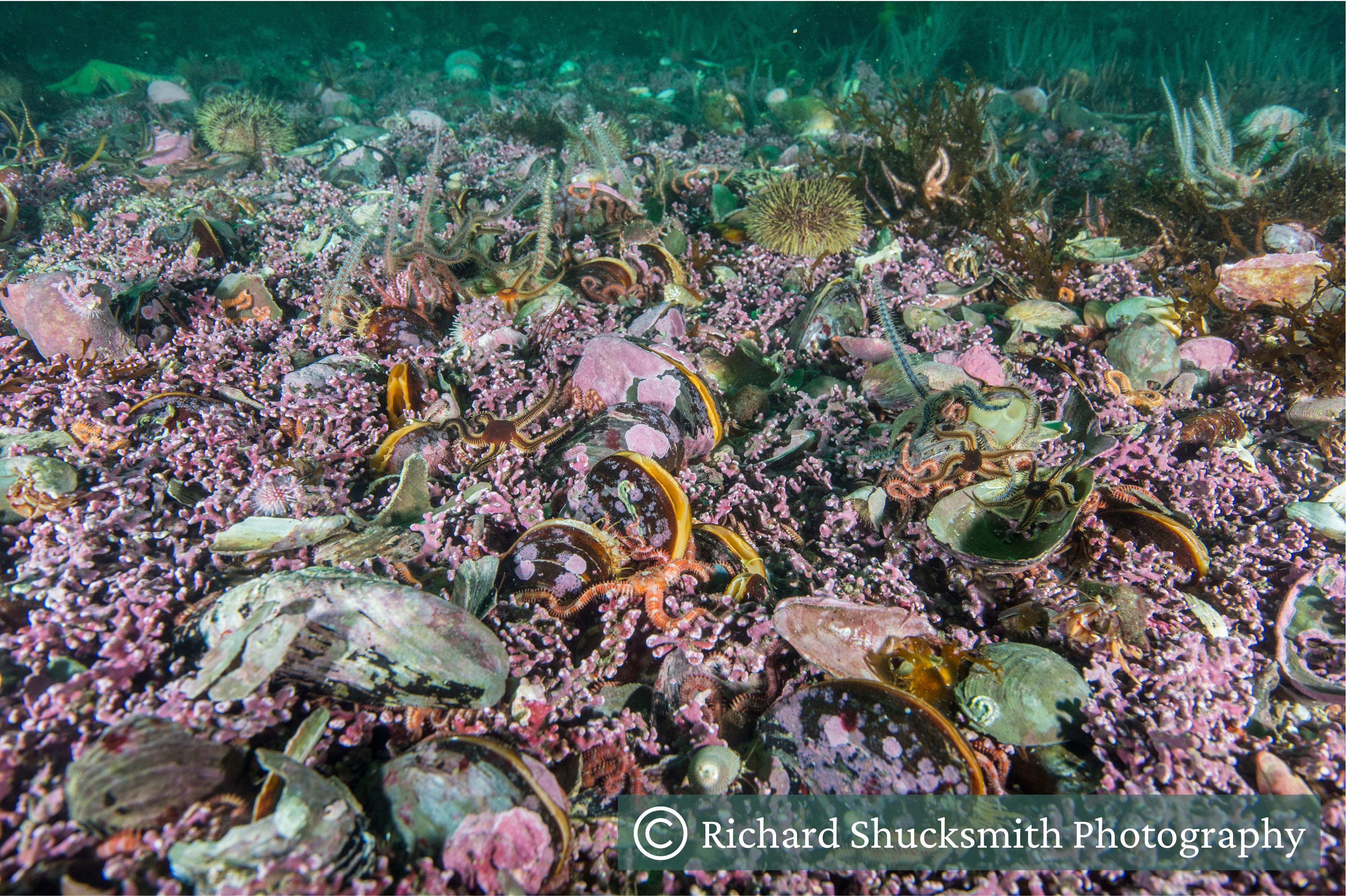Maerl

Maerl audio Photo 1
Maerl may look like coral but is actually a type of algae with a hard external skeleton. Living maerl is bright pink or red in colour. However, it turns white when the living algae dies and only the skeleton remains.
When maerl washes ashore it can form the white ‘coral’ beaches as found on the west coast of Scotland. Together, this living and dead maerl can form beds covering large areas of the sea floor providing a complex structure for other animals to live in.
In this photograph, can you spotted the sleeping octopus camouflaged amongst the maerl and lightbulb sea-squirts?
Various seaweeds, sea urchins, brittlestars, starfish, and sea anemones live on the surface of maerl beds. They can also provide an important nursery habitat for commercially valuable shellfish.
Shetland’s largest maerl beds are found in the waters around Yell. These beds form part of a Marine Protected Area and are also protected by the Shetland Shellfish Management Organisations voluntary closed areas for inshore fishing.
Narrated by- Louise Thomason- UHI Shetland

Maerl audio Photo 2
Maerl beds form a complex 3D structure which can be thousands of years old. Individuals can live up to 100 years and grow very slowly, at approximately 1mm every year.
These ancient habitats play an important role within the marine environment. One of the ways in which it does this is through carbon storage. Most of the carbon is stored within the hard skeletons of maerl. However, there is additional carbon storage in the living soft tissue. Maerl also stabilises the sediment underneath the bed, which stops the trapped carbon within from being disturbed and released.
Narrated by Louise Thomason- UHI Shetland